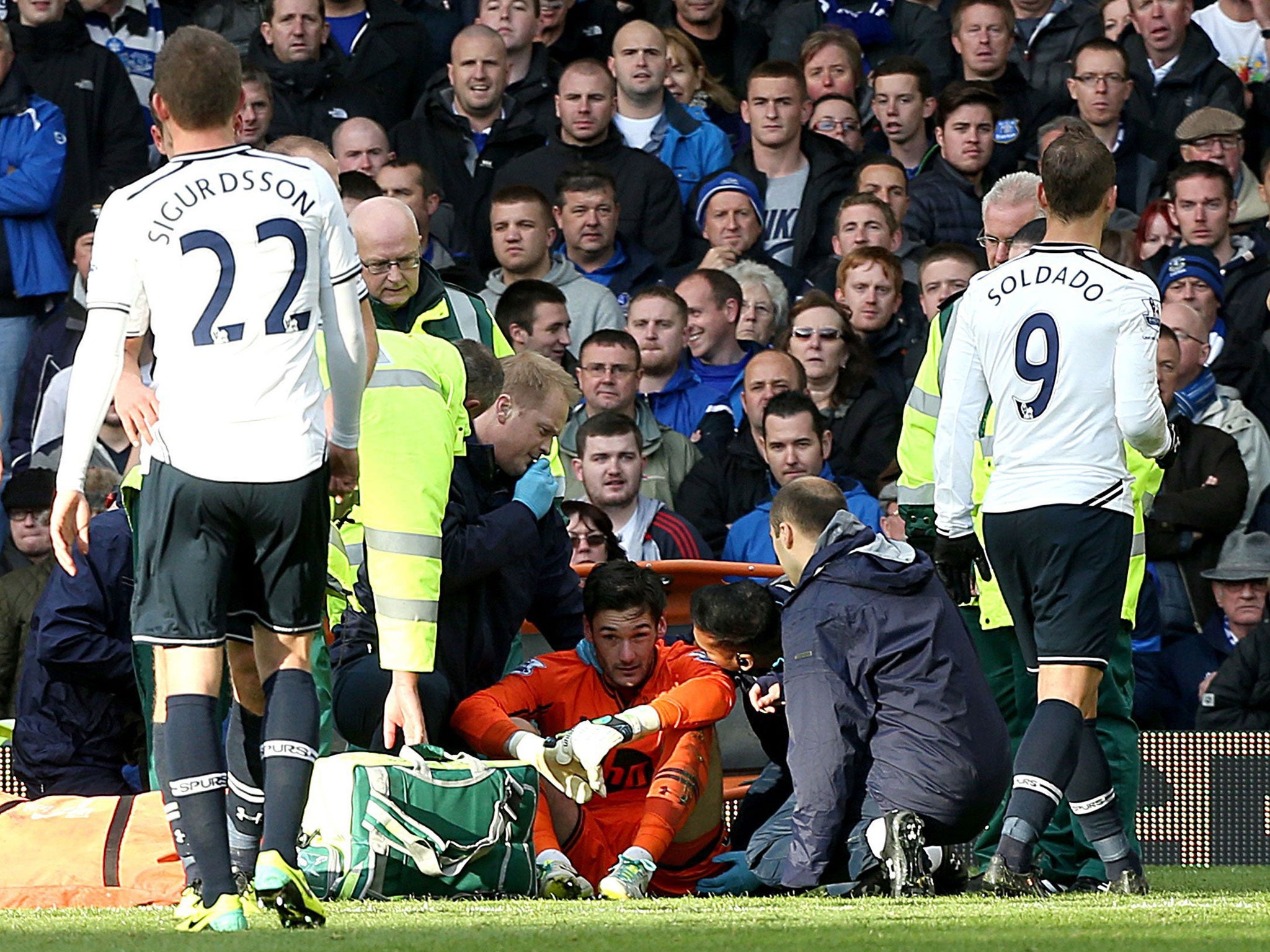Hugo Lloris concussion: Assessment of head injuries can no longer be left to team doctors
The rules that allowed Lloris to continue playing after he was knocked unconscious are outdated and must be changed

Your support helps us to tell the story
From reproductive rights to climate change to Big Tech, The Independent is on the ground when the story is developing. Whether it's investigating the financials of Elon Musk's pro-Trump PAC or producing our latest documentary, 'The A Word', which shines a light on the American women fighting for reproductive rights, we know how important it is to parse out the facts from the messaging.
At such a critical moment in US history, we need reporters on the ground. Your donation allows us to keep sending journalists to speak to both sides of the story.
The Independent is trusted by Americans across the entire political spectrum. And unlike many other quality news outlets, we choose not to lock Americans out of our reporting and analysis with paywalls. We believe quality journalism should be available to everyone, paid for by those who can afford it.
Your support makes all the difference.Where science leads, rules must follow and the fact that Hugo Lloris stayed on the pitch on Sunday – with no laws being broken – shows the regulations are insufficient. The call, from the Professional Footballers’ Association, to introduce compulsory substitutions for players knocked unconscious must surely be right. What Sunday revealed was simply the rules operating in practice, with the club doctors in charge.
Premier League Rule O.9 states that a player with a head injury “shall not be allowed to resume playing or training (as the case may be) until he has been examined by a medical practitioner and declared fit to do so”. The Football Association’s medical regulations for this season make the same point. A player who has been treated for a head injury, according to point 2.7, “shall not be allowed to resume playing or training without the clearance of a qualified medical practitioner”.
Tottenham released their statement on Monday from head of medical services Wayne Diesel, saying the club medical team “were totally satisfied” with Lloris returning to play, their having conducted “the relevant tests and assessments”. That being the case, there was no compulsion for Spurs to withdraw Lloris, so they did not, using their last substitution to throw on Christian Eriksen instead.
However, there was a clear call yesterday for updated practice, with the PFA thoughtfully calling for the pressure to be taken away from club employees in the cases where a player has lost consciousness. The quicker that football moves on this issue, the better. Sports, generally, are more injury-conscious now than they have been in the past. Science is advancing and the responsibility is on the governing bodies to catch up.
Nowhere is this more problematic than in American football, where the National Football League has been embroiled in a crisis over mass concussions, which resulted in the league paying $765m (£480m) to former players and their families in an out-of-court settlement this summer.
This might sound like a heavy price or a generous deal but it was neither, representing less than 10 per cent of the NFL’s annual revenue of $9bn, and, crucially, saving the NFL the prospect of a drawn-out court case. That would have meant far more coming to light about what the NFL knew and when. The settlement also absolved the NFL of responsibility, claiming it “does not represent, and cannot be considered, an admission by the NFL of liability, or an admission that plaintiffs’ injuries were caused by football”.
This has come to prominence in recent years after discoveries about chronic traumatic encephalopathy (CTE), a neurological degenerative disease found in increasing numbers of American football players after death, connected to other neuro-degenerative problems such as dementia or Parkinson’s.
The growing number of old American football players who have suffered from brain damage, thought to be because of repeated concussion – it is a condition also found in former boxers – have brought this issue to the public eye. So did the suicides of NFL legends Dave Duerson and Junior Seau, in 2011 and 2012 respectively, both from gunshot wounds to the chest – widely thought to be so that their brains could be examined post-mortem for evidence of CTE.
Of course in “our” code of football there is far less head-on-head contact. But understanding of brain damage is still evolving and football might be able to keep players safe, as well as avoiding a whole set of other problems, with a simple change.
Join our commenting forum
Join thought-provoking conversations, follow other Independent readers and see their replies
Comments